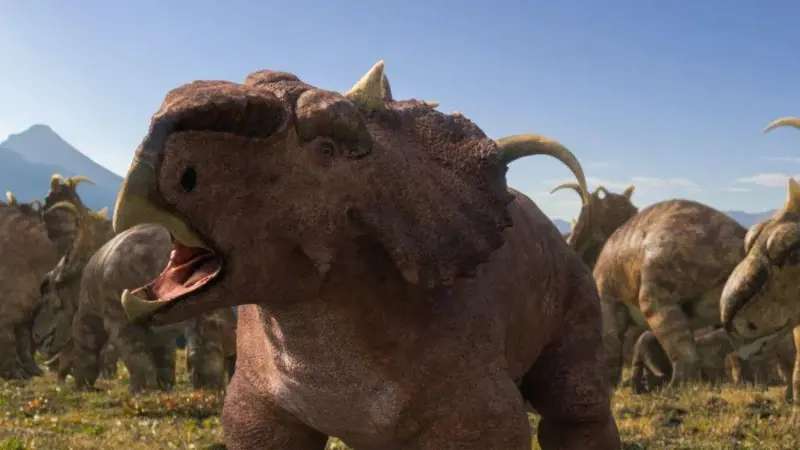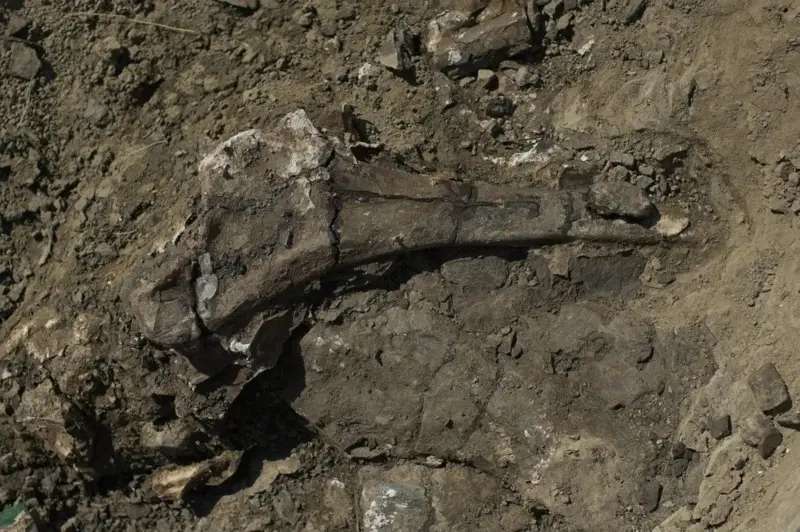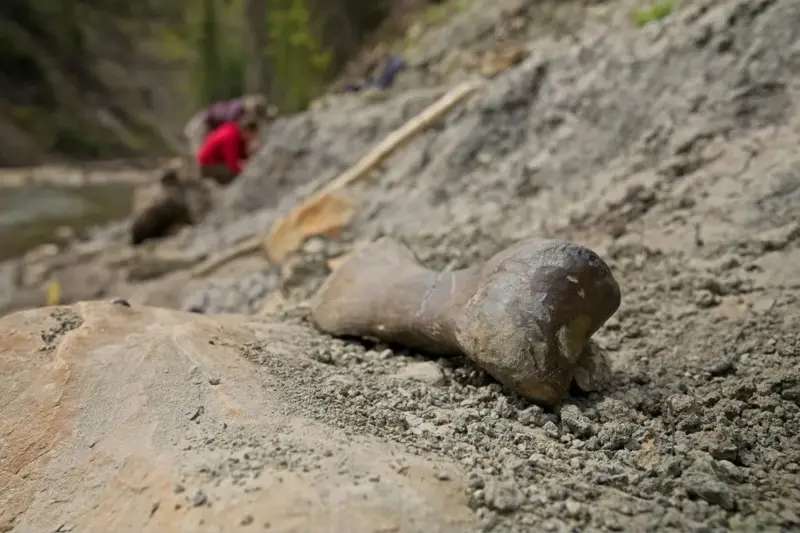Archaeologists in the Canadian province of Alberta have discovered a mass grave of dinosaurs, which is considered one of the largest in history, writes the BBC. In Pipestone Creek, which has been nicknamed the "river of death," thousands of remains of pachyrhinosaurs, four-legged herbivorous dinosaurs that became extinct about 72 million years ago, were found.
The head of the scientists studying the fossil, Professor Emily Bamfort, notes that this area is hidden in an "archaeological treasure" as valuable as gold, and up to 300 bones can be found on each square meter of the site.
So far, thousands of fragments have been found here, mainly belonging to pachyrhinosaurs. These four-legged giants reached about 5 meters and weighed about two tons. The large head is decorated with a three-horned bone collar. The main distinguishing feature of this dinosaur is the protrusion on its nose, called the "boss." Scientists suggest that their mass death could be associated with a sudden catastrophe or a sharp climate change.
The excavations, which will last until the fall, are being carried out in an area where the layer of bones extends up to 1 km deep. According to Bamford, this is a unique opportunity to understand dinosaurs' group behavior and the possible reasons for their migration.























